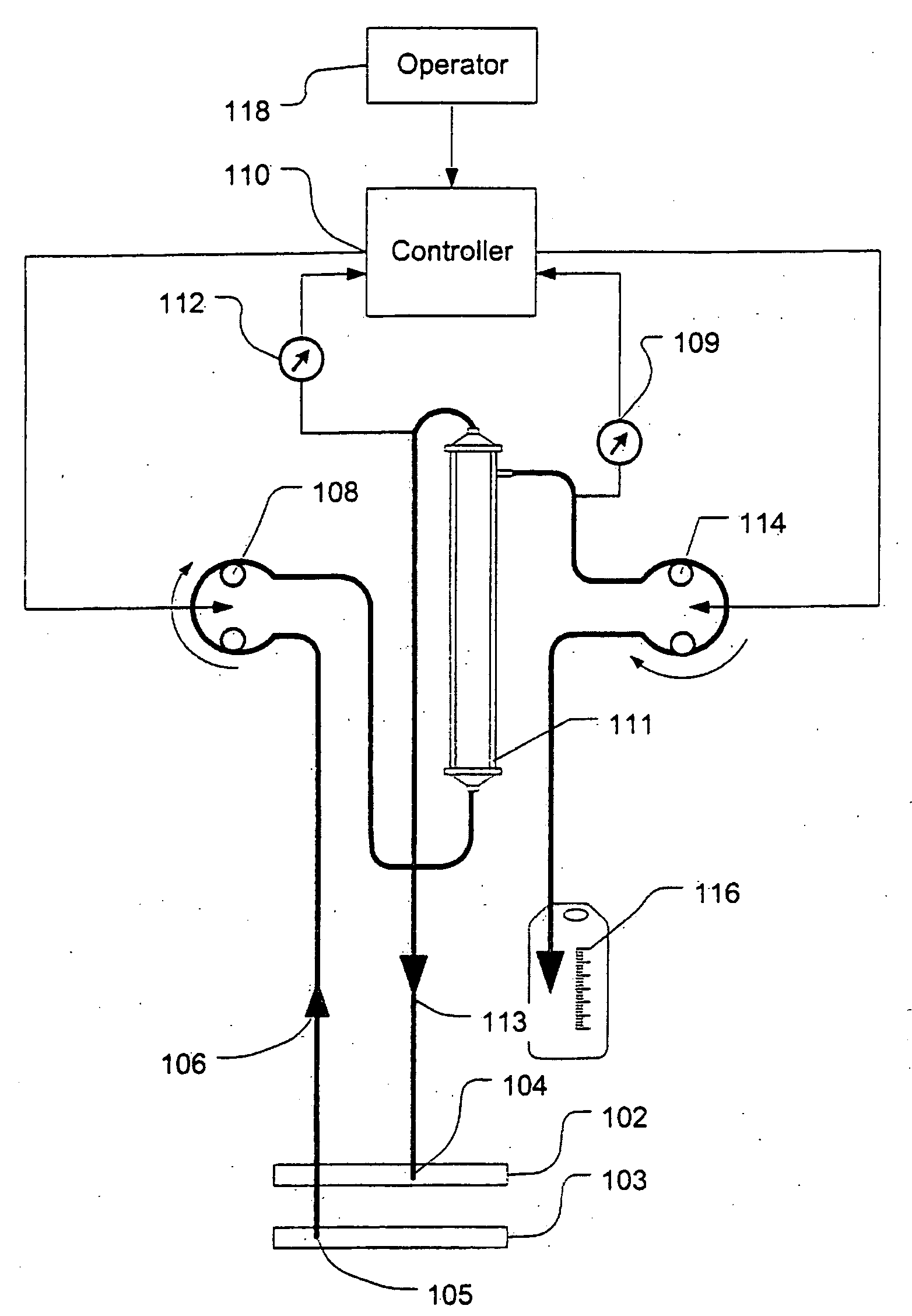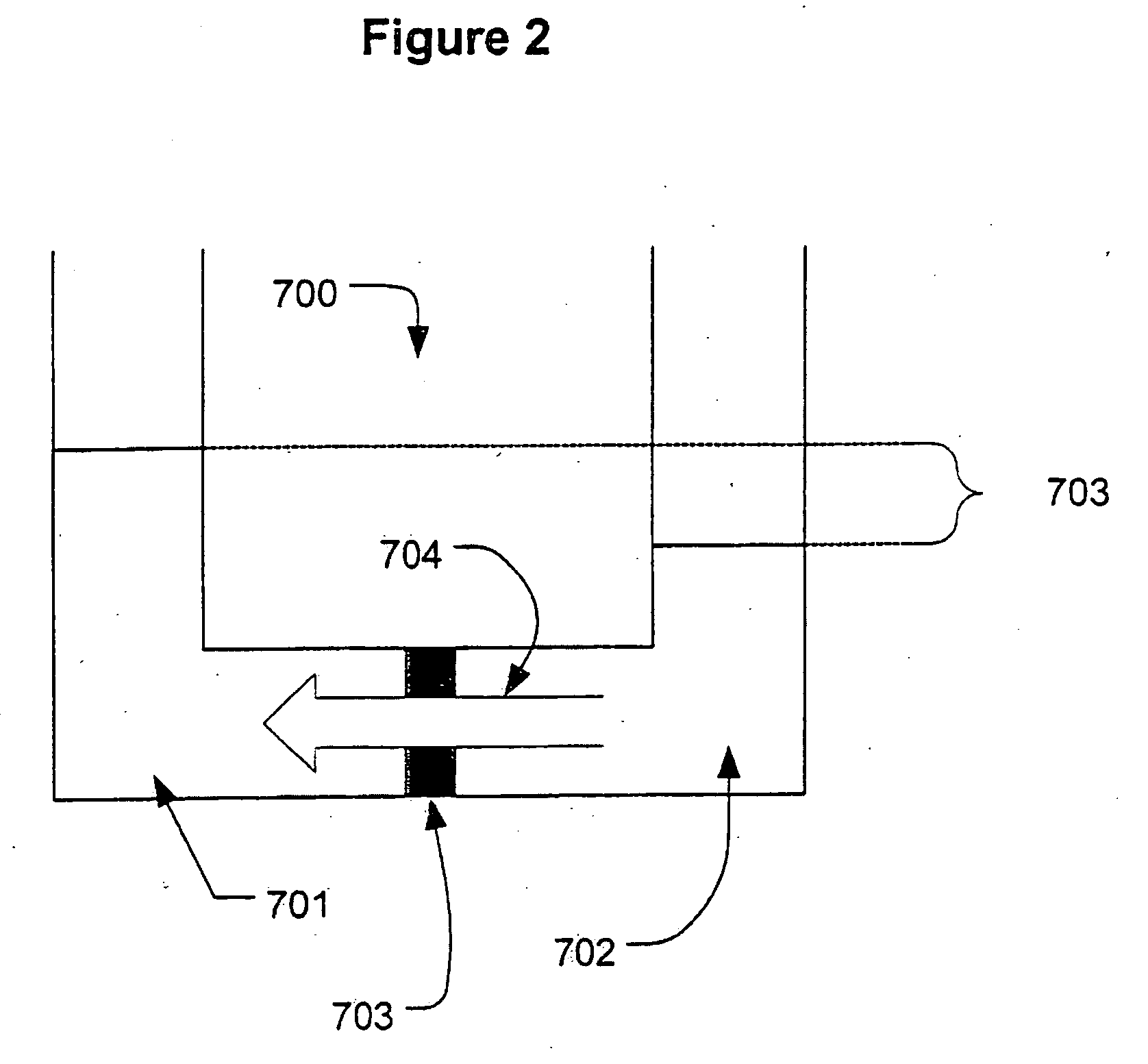Controller for ultrafiltration blood circuit which prevents hypotension by monitoring osmotic pressure in blood
a blood circuit and control device technology, applied in the field of extracorporeal blood treatment apparatus, can solve the problems of abnormal blood pressure drop, lack of fluid removal ability of patients, hypovolemic shock, etc., and achieve the effect of robust and inexpensive measurement system
- Summary
- Abstract
- Description
- Claims
- Application Information
AI Technical Summary
Benefits of technology
Problems solved by technology
Method used
Image
Examples
Embodiment Construction
[0040]FIG. 1 shows a high level schematic diagram of an ultrafiltration system, such as is disclosed in commonly-owned U.S. Pat. No. 6,887,214, entitled “Blood Pump Having A Disposable Blood Passage Cartridge With Integrated Pressure Sensor”, and U.S. Pat. No. 6,585,675, entitled “Method And Apparatus For Blood Withdrawal And Infusion Using A Pressure Controller” and filed Nov. 2, 2000, both of which applications are incorporated by reference in their entirety.
[0041]Blood is withdrawn from the vein 103 of a human or other mammalian patient using a withdrawal needle 105. The blood flows from the needle into a withdrawal bloodline 106 that is equipped with an in-line pressure sensor 107. The sensor transmits a signal indicative of the blood pressure in the withdrawal line to a computer controller 110. The withdrawal line loops through a blood pump 108. The pump creates a suction (negative) pressure in the withdrawal line that draws blood from the vein and into the line.
[0042]The pump ...
PUM
| Property | Measurement | Unit |
|---|---|---|
| pressure | aaaaa | aaaaa |
| pressure | aaaaa | aaaaa |
| pressure | aaaaa | aaaaa |
Abstract
Description
Claims
Application Information
 Login to View More
Login to View More - R&D
- Intellectual Property
- Life Sciences
- Materials
- Tech Scout
- Unparalleled Data Quality
- Higher Quality Content
- 60% Fewer Hallucinations
Browse by: Latest US Patents, China's latest patents, Technical Efficacy Thesaurus, Application Domain, Technology Topic, Popular Technical Reports.
© 2025 PatSnap. All rights reserved.Legal|Privacy policy|Modern Slavery Act Transparency Statement|Sitemap|About US| Contact US: help@patsnap.com



